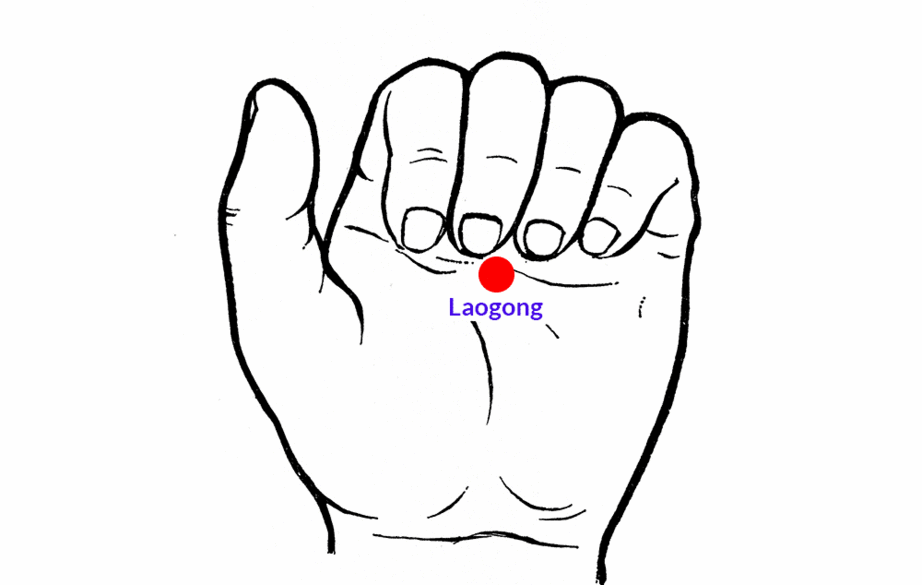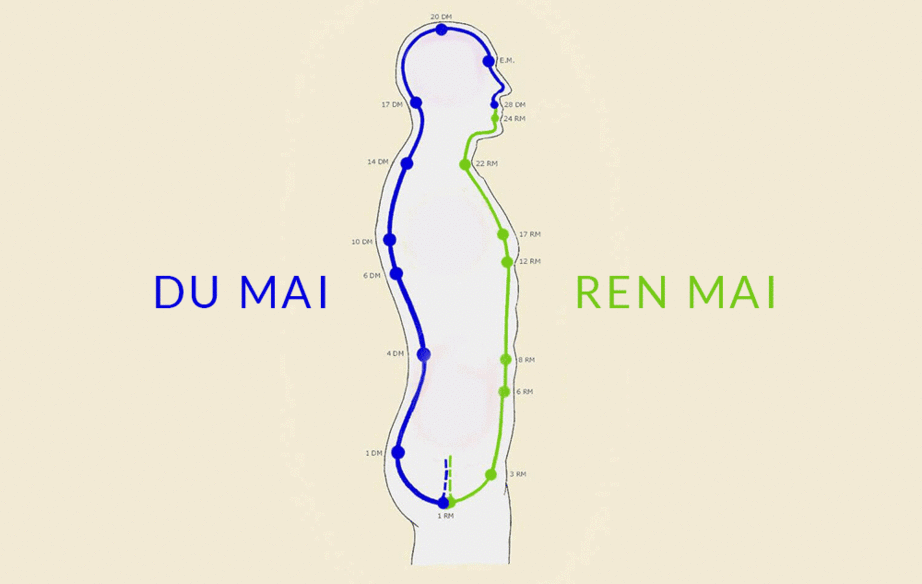Cultivate healing energy with these simple and powerful Qigong exercises
Qigong combines both meditative and physically active elements. The physical elements are expressed through relaxing, visualization, stretching, and breathing. It’s a mind-body practice that first developed over 5,000 years ago, and comprises an important aspect of traditional Chinese medicine (TCM). There is also a term commonly used in the medical community related to this type of practice, known as Medical Qigong(MQ). It’s a mind-body practice that uses physical activity and meditation to harmonize the body, mind, and spirit.

Proponents of Qigong understand that some of our discomfort, sickness, and pain are a result of energy blockages or a “stagnation of energy flow in the energy channel in the human body.” According to this theory, “if there is a free flow and balance of energy, health can be improved and/or maintained and disease can be prevented,” a study published in the Annals of Oncology explains. The study also cites several others that demonstrate the many health benefits Qigong offers, such as lowered lipid levels, blood pressure, and levels of circulating stress hormones, enhanced immune function, improved well-being, and positive effects on inflammation and fatigue in cancer patients.
This type of energy is also associated with “entanglement.” A study published in the American Journal of Chinese Medicine, as seen in the the US National Library of Medicine, demonstrated that a women with special abilities was and is able to accelerate the germination of specific seeds for the purposes of developing a more robust seed stock. Her name is Chulin Sun, and she is a member of the Chinese Somatic Science Research Institute and a Waiqi practitioner, which is a type of Qigong that teaches the practitioner to bring the Qi energy of traditional Chinese medicine under the control of the mind.
The great thing about is is the fact that anyone, no matter their age or physical condition, can practice Qigong. The article linked above describes how Qi energy moves through 12 different meridian points that exist throughout our body. People have reported it as a great way to maintain your health, manage illness, extent longevity, attain ‘enlightenment’ or a greater spiritual understanding, enhance concentration, improve breathing, and more.
Qigong Physical Exercises
Below is a list that was put together from a TCM scholar named Misha Cohen. She was trained in acupuncture at Lincoln Hospital’s Detox Program in the South Bronx under the auspices of the Quebec School of Acupuncture. After that she continued her studies in Traditional Oriental medicine. For more than two decades she has been developing treatment protocols for people with HIV/AIDS. Internationally recognized, Misha is a leader in the field of Chinese medicine and a great place to start if you’re new to this subject and want to learn more. The list below was put together by her in her book titled The New Chinese Medicine Handbook: An Innovate Guide to Integrating Eastern Wisdom With Western Practice For Modern Healing.
This comprehensive guidebook combines Chinese dietary guidelines with Western medicine, plus various other Eastern and Western healing therapies, including:
- Basics of Chinese medicine
- Acupuncture and moxibustion
- Qi Gong: Chinese exercise and meditation
- Dietary practices
- Chinese herbal therapy
Warm Up Exercises
Exercise One: Gentle Sway
1. For five minutes, move both of your arms from your shoulders in a gentle swinging motion. The motion itself is initiated from your waist: Twist from the waist as though your torso were a washcloth that you were wringing out. Don’t twist from the knees or you may harm them. Furthermore, twisting from the waist provides a massage to the internal organs and provides you the full benefits of the exercise.
2. To get started, move your arms side to side across your torso, and then back to front.
3. Keep your knees slightly bent. Let your hips sway. Allow your mind to clear. At first, focus on the release of unnecessary and unconscious stress. After several weeks, you may shift your focus so that you think only about the swaying of your arms and the motion of Qi energy.
This introduces you to the concept of being mindful of the present, much the same concept as found in Zen walking. The same concept of mindfulness is found in the practice of Zen Walking.
Exercise Two: The Bounce
In the beginning, try this for one to three minutes.
1. With your feet parallel and about shoulder’s width apart, bounce with your knees loose and your arms hanging at the side. They should feel empty and neutral. This is the zero position for your arms. When you are bouncing back and forth, your arms in zero should get a nice jiggling effect.
2. Keep your shoulders natural; neither pull them back or let them slump forward too much. When the zero position is used on the whole body, you should receive a feeling of deep relaxation throughout your body. This process brings awareness of internal tension so that you can do something to dispel it, if you choose.
The combination of exercises one and two gently massages and tonifies the Organ Systems, which helps promote longevity.
Stand with your feet parallel and about shoulder’s width apart.
Awareness Exercises
Exercise Three: Accordion
In this, you feel the Qi energy by using your hands like the bellow of an accordion or a bicycle pump.
1. Close your eyes halfway. Clear your mind and concentrate your attention on your palms.
2. Allow your breath to become slow, easy, without force. In a way, you are creating the very lightest trance.
3. Bring your hands together, palms touching and fingers pointing upward. The palm chakras, called Laogong, located in the center of the palms, should be touching. These chakras are areas where Qi can be felt emanating from the body.
4. Slowly move your hands, keeping the chakras aligned. When they are about 12 inches (30 cm) apart, slowly move them together using the least amount of physical effort possible.
5. You will be compressing the air between them like an accordion would.
6. Feel a warm or tingling sensation at the Laogong points on your palms.
7. Move your hands slowly back and forth, varying the range of the bellows. Repeat the accordion technique in different directions: horizontally, vertically, and diagonally.
This exercise cultivates Qi, builds awareness, and sensitizes yourself. When you feel Qi energy for the first time, it changes your mind-set.
The palm chakras, called Laogong:
 Laogong Point
Laogong Point
Qigong Exercise Four: Extending the Qi
If you have Deficient Qi, you should perform this exercise with your eyes half closed to cultivate and accumulate Qi energy.
1. If you have Stagnant Qi, the exercise may be done with your eyes fully open. You will inhale swiftly through your nostrils with your eyes open or half closed when you exhale.
2. Once you can sense the Qi, exercise your intention (which is the mind/spirit part of the exercise) and use your mind to move your Qi out from your body, expanding the zone in which you are comfortable. You may allow the Qi to drift out on the exhalation and then hold it there as you inhale.
When you have learned to be comfortable expanding and contracting your Qi, you will feel stronger and healthier.
3. First move the Qi into an orbit 1 inch (2.5 cm) from your skin. In increments of 6 inches (15 cm), move it outward, aiming for 3 feet (91 cm), but find the point where you are comfortable with it. Then bring it back in until it returns close to your body.
This qigong exercise allows you to communicate with your Qi energy. By increasing the distance away from your body that you can feel Qi, you expand your area of comfort—your field of generosity—in the world around you. You will have less fear and greater abilities. By being able to bring your Qi halo in to skin level (or inside your skin) you may become more centered, calm, and self-assured. When you have learned to be comfortable expanding and contracting your Qi, you will feel stronger, healthier, and more in harmony internally and externally.
Qigong Exercise Five: Pumping The Qi
This is a tricky exercise that moves the Qi energy along the two connecting Extraordinary Channels: the Du Mai and Ren Mai. You may think of it as evolve, devolve, because your posture goes from a slumped, gorilla-like stance to an upright extended pose. It is adapted from the Wild Goose Qigong exercise routine.
1. The first position pushes the Qi down. As your hands push flat down, your spine and head straighten upward. Then as you allow the Qi to flow back upward, your hands rise, elbows bent and palms parallel to the floor. Your shoulders hunch. Repeat this six or seven times, inhaling as your hands come up and exhaling as your hands go down.
2. When you are comfortable with this Qigong exercise, you may combine it with a slow intentional walk forward: left knee bent and raised in an exaggerated stepping motion. When your knee comes up, your hands go down and back and your spine straightens; when your foot touches the ground, your hands come up and your back hunches. Place your feet very gently on the ground and allow each step to proceed in slow motion, at a tempo that soothes and relaxes. Remember to maintain a breathing pattern, too. Inhale as your hands come up and your shoulders hunch. Exhale slowly, expanding your chest as you straighten your back. If this feels awkward, don’t despair. Even in a classroom situation, it takes a while to catch on to what to do.

Exercise Six: Blending Qi
This exercise should help you become aware of various resonations of Qi energy and learn to blend them into a harmonious flow.
1. Stand with your feet a shoulder’s width apart, with your knees slightly bent. Allow your hands and arms to hang at your sides.
2. Shift your weight slightly to the balls of your feet. Simply be aware of the front side of your body. Concentrate on the Channels that pass along the front of your legs and torso, the top of your hands and arms, and your face.
3. After one minute, shift your weight to your heels. Become aware of the back of your body: the back of your head, your arms, your spine, and your legs. With practice, you may hold these postures for up to five minutes or longer.
4. You can also do this for the left and right sides of the body.
5. In each instance, you may want to become aware of each section of the body. For example, the side of your head, the side of your arm and torso, your outer hip, the side of your leg and ankle, and the length of your foot. This makes the exercise a meditation.
6. Now, shifting to a more Nei Dan form of Qigong exercise, repeat the first three steps, but the motion should not be detectable visually. Use your mind to shift your weight forward and backward, feeling your Qi flowing along the front and back of your body.
7. Next, try to feel your Qi flowing along your back and front simultaneously.

